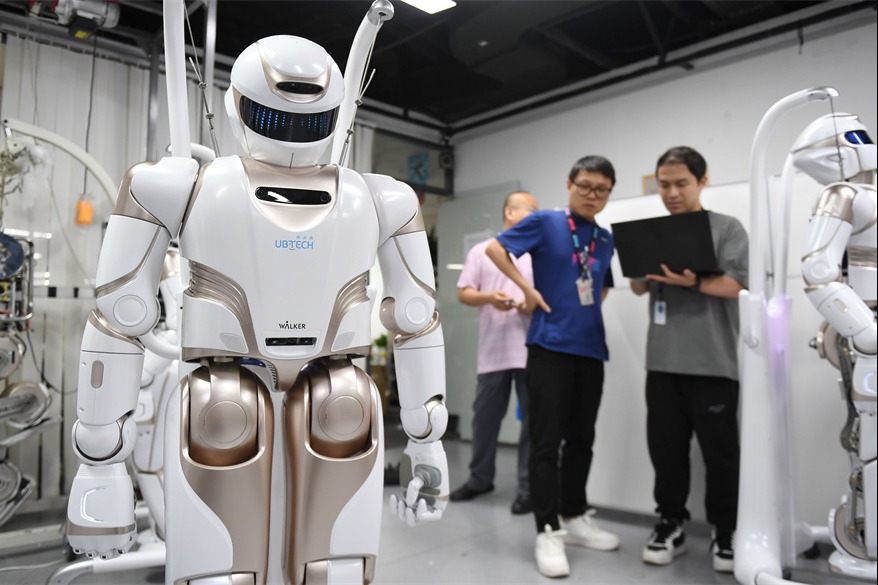Space engineers help make life easier for all
By Zhao Lei | China Daily | Updated: 2017-12-18 08:43
Skills applied in various inventions; latest is a window-washing robot
Chinese space engineers are known for creating interesting gadgets that make everyday life more convenient.
In their hands, for example, rocket and missile technologies have been turned into a popular air purifier, a sought-after air-conditioned jacket and a "magic" vacuum flask that can cool scalding water to drinkable temperature in seconds.
Their latest achievement is a small robot that can make window cleaning and signal-tower inspections easier, safer and more efficient.
Looking like the robotic arm on space shuttle orbiters built by the United States, the robot was designed by engineers at the Second Academy of China Aerospace Science and Industry Corp, the nation's largest missile-maker.
The machine is based on space robot technologies and is capable of moving around on the surface of almost anything, from slippery architectural glass to a slithery ship's hull or a high-rise signal tower.
Li Haiyuan, an engineer at the academy and chief designer of the robot, said his team made it because they noticed there is an absence of such devices on the market.
"It is slow and risky for humans to wash the glass of skyscrapers or examine the structural integrity of signal towers or oil tanks," he said. "Cleaning machines now on the market are only able to clean architectural glass but can't crawl over obstacles, like a window frame. They also need a great deal of manual assistance in operation.
"By comparison, our product can autonomously move and operate almost anywhere on a structure's surfaces, including a building's curtain wall or the exterior of signal towers or oil containers."
People can use it to carry out cleaning, inspection or rust-removal operations, depending on the apparatus mounted on the robot, Li said, noting it will help users reduce costs and improve efficiency.
Engineers applied bionics and biomimetics in the robot's development. They also used ultrasound and visual sensor technologies to enhance the machine's ability to move. All of these came from experience gained through research and development of space products, Li said.
The first prototype of the robot weighs 5 kilograms. Designers plan to develop a larger model that can carry more equipment to perform more operations, he said.
So far, several companies in the power grid, signal tower and oil and chemical industries have expressed interest, he said.
In addition to the robot, the academy is developing a firefighting drone that can launch a rocket filled with a fire-suppressing chemical agent into rooms, according to a news release from the academy.
Engineers said the drone will be suited to putting out fires in high-rise buildings because it can reach the blaze quicker than other equipment.
























